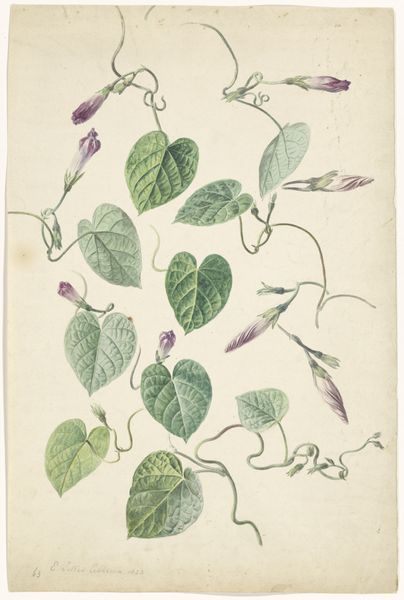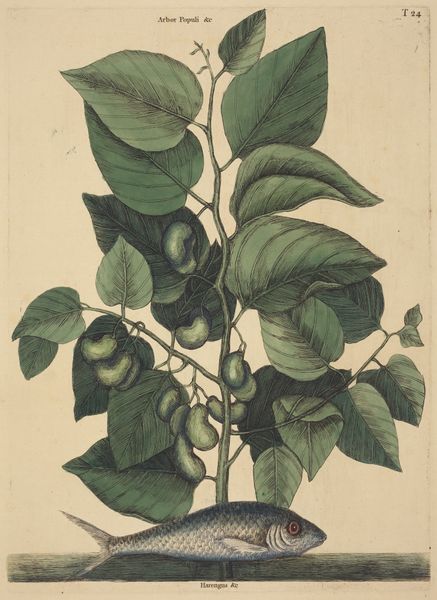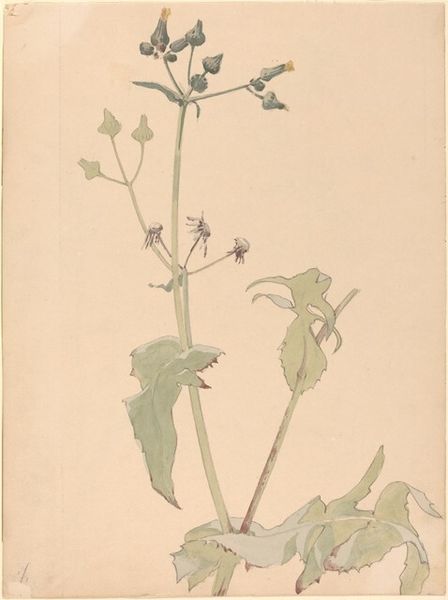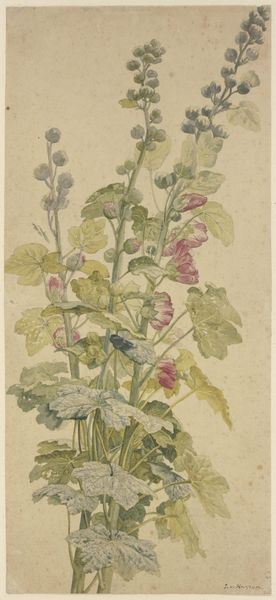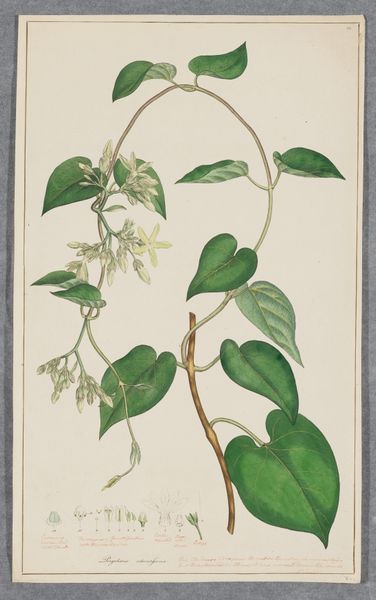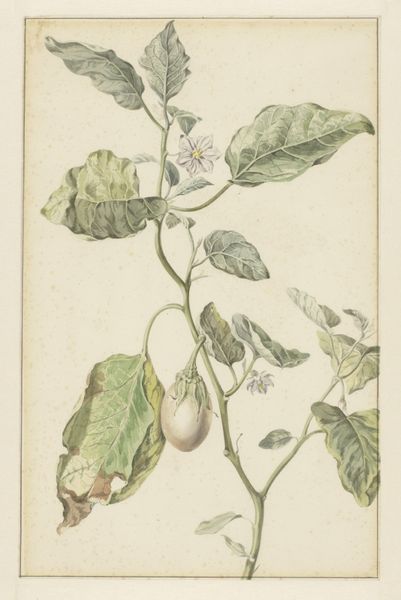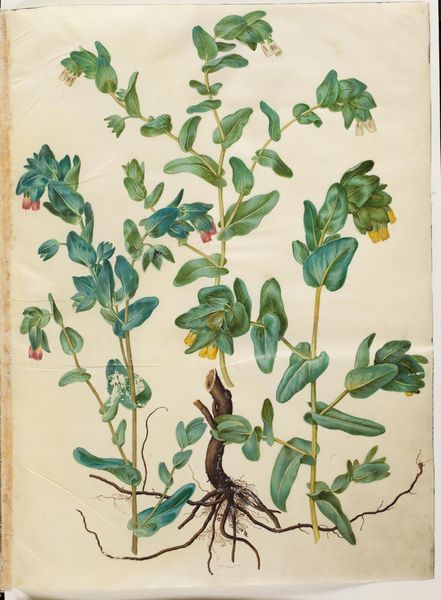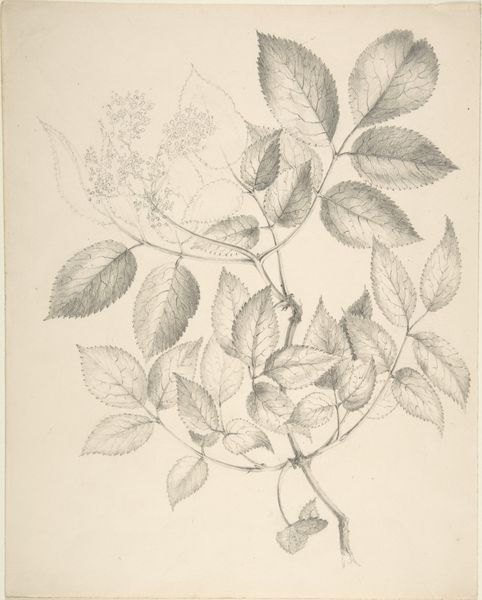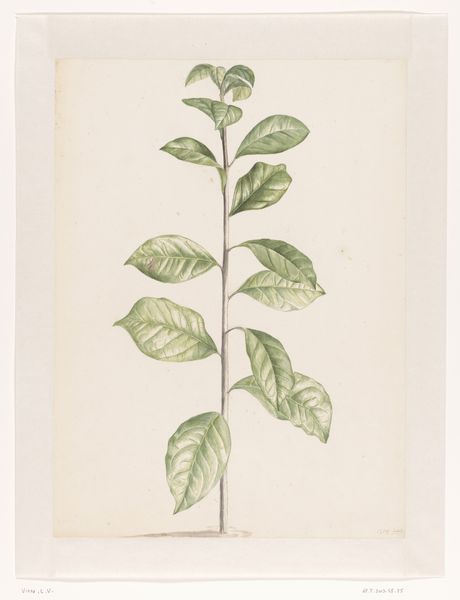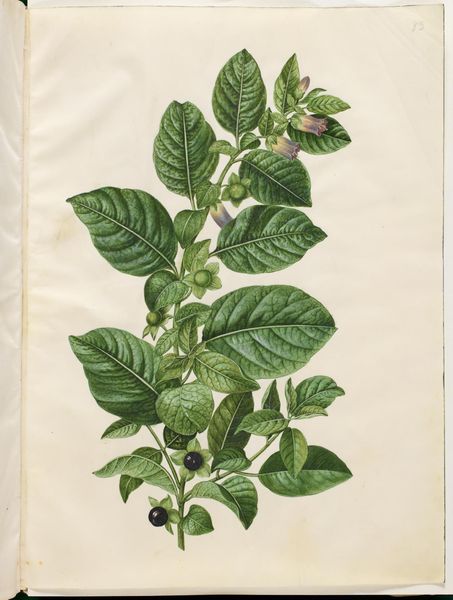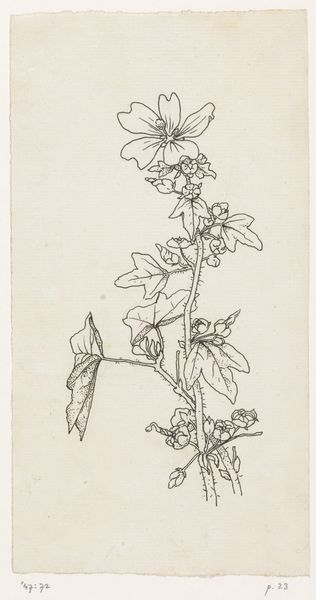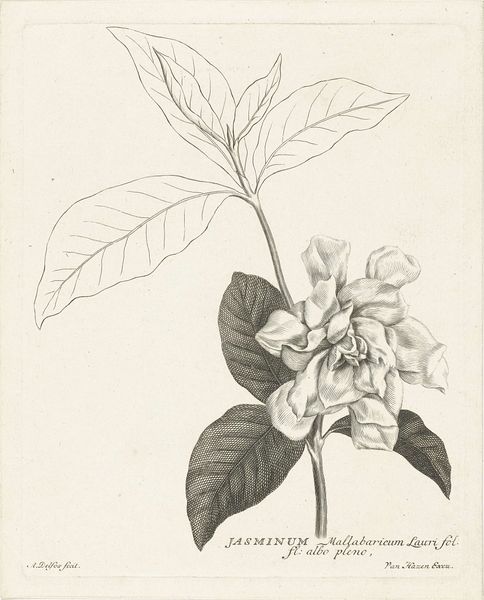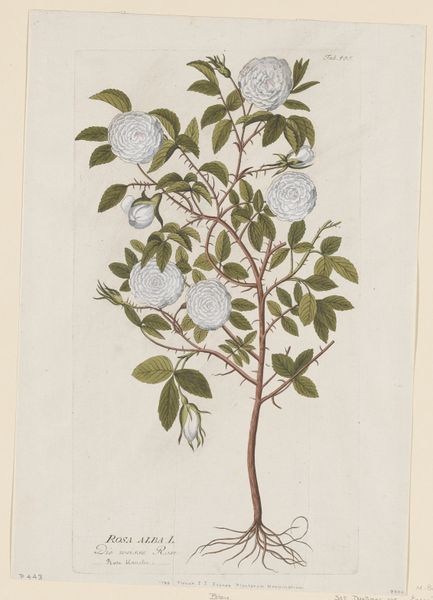
Dimensions: height 628 mm, width 480 mm
Copyright: Rijks Museum: Open Domain
Editor: Here we have "Stalk and Leaves of a Sunflower," a watercolor painting likely created between 1874 and 1918 by Martinus van Andringa. It's currently housed in the Rijksmuseum. I'm struck by how delicate and airy the artist makes this plant feel, despite the sunflower's reputation for being bold and bright. What compositional elements stand out to you? Curator: The composition certainly hinges on a fascinating tension. The artist isolates the stalk, emphasizing verticality, but diffuses the color and light, denying the rigidity we might expect. Semiotically, this functions as a compelling statement. Editor: How so? Curator: Consider the signified meanings of a sunflower: joy, warmth, and even adoration. These are frequently connected to the bloom. Here, however, Van Andringa strips it back, almost refusing that signifier, and instead exploring the beauty inherent in its supporting structure. The negative space surrounding the leaves further accentuates this focused perspective. The meticulous brushstrokes in the leaves also convey an intentional aesthetic choice, avoiding generalization in favor of distinctiveness. Do you find it successful? Editor: I do. Focusing on the leaves allows for a deeper observation of color and texture. Are there any other intrinsic formal choices that impact your perception? Curator: The limited palette. It avoids bold chromatic statements, relying on nuanced tonal gradations of greens and yellows. These hues foster an understated emotional connection rather than an immediate spectacle. One might posit that this suggests a closer, perhaps more intimate understanding of nature’s nuances. It's almost scientific in its precision yet executed with artistic sensibility. Editor: It's fascinating how a piece seemingly so simple can offer so many points of contemplation simply by analysing what is materially represented on the picture plane and how! I now appreciate a more sophisticated approach to interpreting seemingly simple artwork through close inspection and thinking about an artwork as its own visual language.
Comments
No comments
Be the first to comment and join the conversation on the ultimate creative platform.
